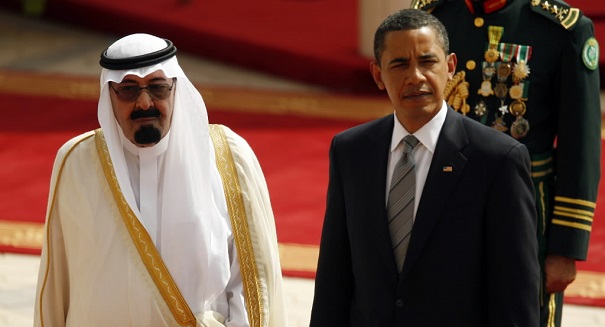
Events throw Arab Peninsula into "dense and fluid" state, with chaos in Yemen following the death of the Saudi King
The U.S. lost a another key ally in the Middle East with the death of King Abdullah of Saudi Arabia on Thursday. The 90-year-old ruler had been in ill health, battling pneumonia for the past several weeks and his death was not entirely unexpected, but its proximity to events in Yemen has increased instability in the region. Saudi Arabia and Yemen both have been useful in the U.S. fight against al-Queda. The countries share not only a border, but access to the Red Sea, the vital shipping route to the Gulf.
The Saudi King was laid to rest in an unmarked grave on the same day as his death, as prescribed by the Wahhabi Sunni sect of Islam. He is succeeded by his 69-year-old half-brother who will rule as King Salman. Another half-brother, aged 60, has been named crown prince to assure the line of succession.
Abdullah’s death came only hours after Houthis rebels forced the resignation of the entire Yemen government, including President Mansour Hadi and Prime Minister Khaled Bahah. The rebels, who are concentrated in the north near the border with Saudi Arabia, are backed by Iran, and self-declared enemies of both al-Queda and America. They have claimed responsibility for the attacks on the Paris offices of “Charlie Hebdo” and the taking of hostages at Jewish delicatessen that resulted in the deaths of 17 people on Jan. 7.
Over the past two years, the U.S. has provided an estimated $1 billion in aid to Yemen, the poorest country in the Arab Peninsula, and established a partnership for the training of counter-terrorism units. Last September, President Obama pointed to Yemen as a successful model for creating new partnerships in the Middle East. With the death of the Saudi leader and the resignation of the Hadi government, America will be testing its ability to forge new relations not only in the region, but with Abdullah’s successor and the whoever emerges as the leader of Yemen.
They seized the Yemen capital city of Sanaa in September, demanding a role in drafting a new constitution for the country triggering an attempt by the U.N. to broker a solution. Talks broke down when the government insisted on adding a plan to divide the country into six regions, which the Houthis saw as diluting their power. They laid siege to the presidential palace and kidnapped the president’s chief of staff, prompting the resignations and virtual dissolution of the Yemen government on Thursday.
Asked about the unsettled situation in Yemen, outgoing Secretary of Defense Chuck Hegel said, “We still want to participate and cooperate and partner with the Yemen government,” but admitted that it is unclear who will be the leader as the situation in the capital remains an unknown. When asked about the anti-American stance of the Houthis, State Department spokeswoman, Jen Psaki said, “The situation is dense and fluid. We still don’t know what’s going on there.”
The Saud dynasty has been an ally of the U.S. for decades and Abdullah initiated crackdowns on rebel elements within Saudi Arabia after it was revealed that 15 of the 19 terrorists were responsible for the 9/11 attacks on America in 2001. He has encouraged the U.S. to “cut off the head” of terrorism by attacking Iran to destroy its nuclear program and has recently manipulated the price of oil in an effort to put pressure on Russia and Iran, the two main supporters of Syria.
President Obama made limited remarks about violent terrorism in the annual State of the Union address on Jan. 20, even as the Houthis were in control of the presidential palace in Yemen. The president restated his preference for forming partnerships saying that instead of sending large numbers of ground forces overseas, America is going to partner with nations from North Africa to South Asia to deny safe haven to any terrorists who threaten the U.S.
Leave a Reply